#East York Emergency Dentist
Text
Explore the exceptional dental emergency services in East York designed to address any immediate dental concern—from sudden toothaches to knocked-out teeth. So, join us in ensuring that everyone in East York can confidently smile, even in emergencies!
#Dentist in East York#East York Dentist#Emergency Dentist#Dentistry#Emergency Dental Care#emergency dentist in east york#East York Emergency Dentist#East York Dentistry#Dentistry in East York#East York Smiles#smile transformation#smile makeovers#east york smiles
0 notes
Text
Dental Equipment Market is projected to expand at a steady CAGR over the forecast by 2031 | DENTSPLY Sirona (US), Planmeca Group (Finland), Envista Holdings (US), Align Technology (US), A-dec Inc. (US), J. MORITA CORP. (Japan), GC Corporation (Japan)

New York, Global Dental Equipment Market report from Global Insight Services is the single authoritative source of intelligence on Dental Equipment Market. The report will provide you with analysis of impact of latest market disruptions such as Russia-Ukraine war and Covid-19 on the market. Report provides qualitative analysis of the market using various frameworks such as Porters’ and PESTLE analysis. Report includes in-depth segmentation and market size data by categories, product types, applications, and geographies. Report also includes comprehensive analysis of key issues, trends and drivers, restraints and challenges, competitive landscape, as well as recent events such as M&A activities in the market.
Read more about Dental Equipment Market here:https://www.globalinsightservices.com/reports/dental-equipment-market/
The dental equipment market was valued at USD 6.6 billion in 2021 and it is anticipated to grow up to USD 13.1 billion in 2031 at a CAGR of 7.1% during the projection period.
Dental equipment is a tool that is used in the diagnosis, assessment, and treatment of various oral diseases. Dental instruments are used by the dentist and staff during a dental procedure. There are various dental instruments used by oral health care professionals for carrying out different therapeutic procedures. Owing to increased dental diseases and their treatment, increased demand for cosmetic dentistry, and advancement in technology, the demand for dental equipment is anticipated to grow over the upcoming years.
Global Dental Equipment Market Scope and Report Structure
Report AttributeDetailsMarket Size in 2021$6.6 bnMarket Size in 2031$13.1 bnGrowth Rate (2021-31)7.1%Historic Period2015-2020Forecast Period2022-2031Base Year2021Segments CoveredProduct, End User, and RegionKey CompaniesDENTSPLY Sirona (US), Planmeca Group (Finland), Envista Holdings (US), Align Technology (US), A-dec Inc. (US), J. MORITA CORP. (Japan), GC Corporation (Japan), Midmark Corporation (US), Straumann Holdings AG (Switzerland), 3M Company (US)Regional ScopeNorth America, Europe, Asia Pacific, Central & South America, Middle East & AfricaAnalysis CoverageMarket Forecast, Competitive Landscape, Drivers, Trends, Restraints, Opportunities, Value-Chain, PESTLE, Key Events and Developments
Market Trends and Drivers
The key factors such as the development of technologically advanced technologies are propelling the growth of the market. The dental industry has evolved over the years with the development of new dental materials. Patient compliance has concurrently increased, with a sharp increase in the demand for minimally invasive procedures. Dental lasers have seen increasing use in surgical procedures like gum lifting and teeth whitening to eliminate or minimize blood loss and reduce patient discomfort. Adhesive dentistry is another area that has gained attention—this uses composite materials to improve aesthetics and strengthen teeth with minimal damage to tooth structures. Owing to that, the number of people opting for such procedures is increasing.
An emerging aspect of cosmetic dentistry is the use of advanced technologies in intraoral cameras to capture images of the smile. Intraoral images assist patients in deciding what cosmetic dentistry treatments they should opt for to enhance their smile. This has occasioned a greater emphasis on the use of 4D imaging scanners for monitoring jaw movements. Additionally, advancements in dental materials and procedures have enabled replicating the properties of natural teeth. One such procedure is cosmetic tooth lightening, one of the most preferred in-office cosmetic dental procedures. So, the focus on developing new technologies and dental materials is anticipated to create new opportunities for players in the dental equipment market.
The demand for dental care services is expected to grow globally owing to the changing demographics, growing dental care awareness, sedentary lifestyles, and the increasing prevalence of dental diseases. Still, a shortage of dental professionals in countries poses a significant challenge. Similarly, high cost of the dental imaging system and a lack of reimbursement for dental procedures. Digital dental imaging systems, such as digital dental X-ray and dental CBCT systems, enable the accurate diagnosis of dental conditions by offering high-quality images. However, the high costs of these systems are limiting their adoption.
Global Dental Equipment Market Segmental Overview
The report analyses the global dental equipment market based on products, end user, and region.
Global Dental Equipment Market by Products
Based on products, it is segmented into therapeutic dental equipment and diagnostic dental equipment. The therapeutic dental equipment segment is likely to dominate the market during the forecast period. The key factors such as the rapidly growing aging population and the increasing incidence of dental disorders and diseases are boosting the growth of the market.
Global Dental Equipment Market by End User
Based on end user, it is segmented into hospitals & clinics, academic & research institutes, and others. The dental hospitals & clinics segment is likely to dominate the market during the forecast period. The key factors such as the increasing number of dental clinics and hospitals across the globe, rapid adoption of advanced technologies coupled with increasing dental tourism in emerging markets and the rising number of group dental practices in developed countries are boosting the market during the forecast period.
Geographical Analysis of the Global Dental Equipment Market
Region-wise, it is studied across North America, Europe, Asia Pacific, and the Rest of the World. The North American region is likely to dominate the market during the forecast period. The growing demand for cosmetic dentistry coupled with the rising patient population for dental diseases is boosting the growth of the region.
Major Players in Dental Equipment Market
The key players in the dental equipment market are DENTSPLY Sirona (US), Planmeca Group (Finland), Envista Holdings (US), Align Technology (US), A-dec Inc. (US), J. MORITA CORP. (Japan), GC Corporation (Japan), Midmark Corporation (US), Straumann Holdings AG (Switzerland), 3M Company��(US), BIOLASE, Inc. (US), 3Shape A/S (Denmark), BEGO GmbH & Co. Kg (Germany), Ultradent Products, Inc. (US), Yoshida Dental MFG. Co., Ltd. (Japan), Nakanishi Inc. (Japan), DentalEZ, Inc. (US), Carestream Dental LLC. (US), Takara Belmont Corporation (Japan), Nova Instruments (UK), NewTom (Italy), Millennium Dental Technologies, Inc. (US), PreXion, Inc. (Japan), Brasseler USA (US), Ivoclar Vivadent AG (Liechtenstein), AMD LASERS (US), Aseptico (US), and BIEN-AIR DENTAL (US).
COVID-19 Impact
With Global Insight Services, you receive:
10-year forecast to help you make strategic decisions
In-depth segmentation which can be customized as per your requirements
Free consultation with lead analyst of the report
Excel data pack included with all report purchases
Robust and transparent research methodology
About Global Insight Services:
Global Insight Services (GIS) is a leading multi-industry market research firm headquartered in Delaware, US. We are committed to providing our clients with highest quality data, analysis, and tools to meet all their market research needs. With GIS, you can be assured of the quality of the deliverables, robust & transparent research methodology, and superior service.
Contact Us:
Global Insight Services LLC
16192, Coastal Highway, Lewes DE 19958
E-mail: [email protected]
Phone: +1-833-761-1700
#Dental Equipment Market#Dental Equipment Market trend#Dental Equipment Market demand#Dental Equipment Market growth
0 notes
Text
Rozenberg Dental NYC

They possess an artistic eye, meticulously crafting smiles that harmonize with facial features, skin tone, and personality. Their work goes beyond fixing dental flaws; it's about sculpting a masterpiece that radiates confidence and vitality. These practitioners often collaborate with other specialists, such as orthodontists and oral surgeons, to offer comprehensive treatment plans that address both functional and aesthetic aspects. In the ever-evolving landscape of dental care, dental implants have emerged as a transformative solution, providing individuals with a renewed lease on their smiles and a heightened quality of life. Beyond the cosmetic implications, dental implants address fundamental oral health concerns while presenting an array of advantages that extend far beyond their immediate application. The essence of a dental implant lies in its ability to replicate the natural tooth structure with unparalleled precision. Crafted from biocompatible materials like titanium, the implant is strategically placed within the jawbone through a minimally invasive surgical procedure. Welcome to the realm of dental perfection at Rozenberg Dental NYC, an oasis of oral artistry nestled within the chic Upper East Side of Manhattan. Here, Dr. Lana Rozenberg, a luminary in the realm of cosmetic dentistry and a board-experienced virtuoso, orchestrates smiles that transcend mere aesthetics, becoming transformative works of beauty and confidence. In the vibrant tapestry of New York City, Dr. Rozenberg's name resonates as a paragon of excellence in the field. Her accolades as one of the foremost cosmetic dentists in this metropolis are well-deserved, founded upon her mastery of both the technical and artistic aspects of her craft.
Contact Us:
Rozenberg Dental NYC
Address: 8A E 63rd St, New York, NY 10065, USA
Phone: 212-265-7724
Email: [email protected]
Website: https://www.rozenbergdentalnyc.com/
External Links:
Disqus
Spreaker
Wikidot
Artmight
Wellfound
1 note
·
View note
Text
Main St., Warrenville
Where are you from, anyhow?
Warrenville is and was the kind of East Coast rural that could’ve been cut and pasted from the deepest bits of the Iron Belt and slapped somewhere George Washington once laid his pretty head when the British were still a pressing issue. Nestled between two high-ways, it’s about an hour from Boston and two to New York, but home to little more than rolling fields and rustic and rusting barns that might’ve been that picturesque red, once, but the wind-beaten and time-worn wood shingle suits them better.
Warrenville's mostly hills. If you’re driving through (and everybody’s only ever driving through) ...
... you’d bet cows outnumber people by about three to one, although chickens have supreme reign. It didn’t need more than a one-room schoolhouse ‘till 1960. There’s no grocery store: if you don’t grow or slaughter it, you've either got a neighbor who does or you’re one of the live-in outsiders who better not shop too long at a place in town anyway. Matter of fact, there’s no pharmacy, either. No doctor, although a dentist just moved into what the town calls a strip mall but the locals call an ugly mess built on faulty gas lines, so we’ll see. Not like the water’s got fluoride, given as it’s all wells or well-filtered cowponds, so it’s not the worst idea. Warrenville does have three long-lived vets, though, for all the cows and in case of emergency, and eleven churches and nine boneyards and two gas stations where you can play lotto and get cigarettes. One even got a Dunkin’ tacked onto it, just in case you forgot this was still true New England, and they also went and put a dollar store where the old ice cream place used to stand and that’s been doing fine. Better than the packies, even, the classic choice for buying eclectic crap by the cash register on weekends, although they’ll never truly die. Not much to do but drink, after all, not once the corn’s reaped and the snow rolls in.
And Warrenville put all of this more or less along what you could call Main St.: one long road with about three names and which cuts clean from one highway to the other. It’s even paved all the way, which was good for the trucks that roar through but bad for the rest of us if it rains. It’s the slugs and the worms, really: they come out when the asphalt’s wet, not knowing any better, and the barreling pick-ups turn them straight to slime everybody else is left to skid through. Nevermind the bottle glass, which at least grinds down with gravel or dirt, but there on the tar just sits and glitters.
Anyway, most follow Main St. and never even know they’re here, which is near the wisest bet. GPS doesn’t work. You’d think it might, on account of the proximity to civilization the dense woods try so hard to hide, but it dies when you cross the town line and doesn’t come back ‘till you’ve hit the next exit.
Now the wisest bet is, of course, to never come to Warrenville at all. Like that’s never really a choice you get to make.
#magestone#where we're from#warrenville#rural gothic#wwf: p1#vignette#creative writing#flash fiction#newengland#connecticut#new england gothic#chapter 1#writings from m
7 notes
·
View notes
Text
Trying something new. Here is the first bit of a story a wrote.
Chapter 1
The sun was setting over the New York skyline; the oranges, yellows and pinks mixing to create their own artwork. My family’s house was warm from the sun and quite except for the TV playing in the background. It should have been the perfect end to the perfect day but it wasn’t. Not when my mother was rushed to the hospital. I was sitting in the back seat with my brother while my father sped down the road to the hospital. My mother was sick, again. It happens a lot but this time was different. It’s normal for my mom to be tired and to lie around all day but this time she was throwing up and she was really frail. She didn’t look too good. We raced to the emergency entrance of the hospital. Dad brought Mom in and Aiden and I sat in the lobby like we always did when Mom gets brought in. I hated the hospital; we spent too much time in there. Mom had the feeling that I wished I was hanging out with my friends but I couldn’t just leave her while she goes through this. I played games on my phone hoping to distract myself. Aiden had a magazine in his hands but wasn’t really reading it, just staring at the pages. This was the worst Mom has ever been. It’s a scary thing to see your Mom throwing up and not being able to help clean up because she is too weak.
Last year, around this time in May, Mom was diagnosed with stage 3 breast cancer. She has had surgery to remove the tumor and then had chemo to keep it away. The doctors were hopeful that she would make a full recover because it hadn’t spread. The chemo was what made her sick. The chemo didn’t bring her down, she always had a smile on her face and didn’t give up, and she was a trooper. She would get through this; she had too.
Aiden and I sat there for half an hour before Dad came out to get us.
“Your mom is in a room. They want to keep her overnight just to make sure she is alright.” He had tears in his eye. Dad was strong and he got scared when Mom had her incidents. “You can come in and see her now.”
We walked down the halls to Mom’s room. She had her eye’s closed and was lying down. When we walked in her eye’s popped open and she smiled.
“That was quite a scare now wasn’t it?” She laughed. I admired how she could joke at time like this. I walked over to her bedside and she moved over and made room for me on the bed. I climbed up and fixed the blankets. She kissed the top of my head and laced our fingers together. Dad and Aiden pulled over chairs and we just sat there in silence for a while. Then Mom said, “There is something your father and I have been talking about for a little while. The doctors suggested it and we think it will be good, for all of us.” She squeezed my hand and reached for Dad’s.
“Your mother and I think that it would be good for us to move. The city is too stressful for your mom and the fresh air could be good for her.” I just stared at them. I wasn’t even done my last year of high school. I wanted to graduate with my friends.
“Laurel, I know it’s a bad time for you. We wish we didn’t have to move, with your graduation coming up —”
“Then don’t make us move!” I almost shouted. I couldn’t believe that they were going to take me away from my friends.
“I know this is hard for you sweetie, but this could help your mother.” I couldn’t stay mad at Dad when his brown eye’s glittered with tears.
“What about Aiden?” He was in college for physical therapy and he was only there one year.
“I’ve already applied to East Carolina University,” He said but I don’t know if he was happy about it.
“That’s not fair! He’s at NYU, how could we just leave?” I was furious.
“It’s already been decided Lo, we leave in two weeks. We have found a house and a school for you.” He was dead serious about this. They were going to uproot our lives.
“What about your job’s?” I hoped that this would put doubt in their minds and make us stay.
“Your mother has a position at a dentist’s office when she is ready to get back on her feet. I can still do my job from our new house. They have a base there that just happens to need a new manager. Everything has already been planned Lo, this is happening.” Dad looked frustrated and tired. Mom had stayed quiet the entire conversation. I looked up at her face and realised that she had fallen asleep.
“I can’t believe you are doing this. I don’t want to go.” I slid out from the bed and walked out of the room, leaving Aiden and Dad to talk. I didn’t know where to go so I just walked the halls. I passed an old man with his family gathered around his bed, they looked happy. I walked to the maternity ward of the hospital because I’ve always like helping children. That’s why I was thinking of becoming a nurse. I haven’t told Mom or Dad because it’s just too much stress for them right now.
While I walked down the hall I saw a mother holding her new born baby, a mother and father watching their little baby in an incubator fighting for his life, and two little girls dressed in hospital gowns running down the halls playing tag.
I ended up in the cafeteria buying a tea. I don’t know why we had to move. That was the first time that Mom got bad. It’s not like this was a regular thing. She could get better here, I wouldn’t have to leave my friends and Aiden wouldn’t have to leave NYU. I didn’t want to leave the house and the city I grew up in. All of our memories were there, our home was there. If we leave it won’t feel like home, I knew it.
I finished my tea and went back to Mom’s room. She was still asleep and Dad was gone. Aiden was still sitting in the chair where he was when I left.
“Where did Dad go?” I asked Aiden. He had his head resting against the back of the chair and he had his eyes closed.
“He went to get Mom a change of clothes. He said he would be right back.” He didn’t turn to face me but said, “Don’t get so mad at Mom and Dad, they are just trying to do the best with this situation. Try to be happy about this move, please, for Mom.” He knew that I would do anything for Mom. I knew he would too.
“Okay, I will. For Mom, but I’m going to miss it here.” A sob caught in my throat, that’s when he looked at me. He sat up a little straighter and opened his arms. I walked over and sat on his lap. Even at 19 he would still hold me like I was a little girl. Aiden had always liked the big brother role. He would beat up my bullies for me, he would come and stay in my room when I got scared and he was always there to talk to. He seemed to know when I needed him the most. I always thought he would make the best boyfriend to one very lucky girl. He was charming, polite and deep down, was a giant teddy bear. With his rich blue eyes, it was like looking into the night sky, his coffee coloured hair that was always perfect even though he never did anything to it and his scar along his chin. The scar is from when he and I were young, we both have one.
When we were 12 and 10 we were fooling around by our pool. Aiden had picked me up and was going to throw me into the pool but slipped on a puddle of water. I remember falling towards the edge of the pool and the look on Aiden’s face as I fell towards the edge. I remember seeing the pool rush at me and then nothing. I woke up lying on the grass and Aiden had blood running down his jaw. Then everything went black again and I woke up in a hospital bed. My family was all around me. Aiden had stitches on his jaw and I had them on my head. They told me that I almost drowned. Aiden saved my life by starting CPR but I had secondary drowning on the way to the hospital. I was lucky.
I was afraid of people picking me up near pools ever since and I would walk slowly near them. I wasn’t afraid of swimming but just being near the side of a pool freaked me out. I also don’t like me head going under. The water enveloping my head reminds me of that day.
Aiden and I fell asleep in the chair only to be woken up by Dad when he said it was time to go home. Aiden and I kissed Mom goodnight and followed Dad to the car. We got home and all went straight to bed because it was a long day of packing tomorrow.
I woke before the sun came up. The boxes for all of my things were already in my room. We had a week to pack and I still had to go to school even though I wasn’t finishing there. I wasn’t sure why we were leaving with only three weeks left of school because that would mean I was the new girl for two weeks and then I would graduate. This was ridiculous.
I packed for two hours straight when I decided to take a break and go eat something. In the kitchen Dad was making breakfast, toast with jam, like every morning. He was on the phone, probably with one of his clients, and didn’t even notice that I came down. That’s how it always is, work before family unless it’s Mom, (so I guess work before children). Dad worked for a real estate company so he was always talking to someone about what was wrong or who needed a house. He made a lot of money because his business is so big, he pretty much owns it.
I made a bagel with cream cheese and headed back to my room. I sat in the middle of my bed looking around my room. It wasn’t very big but it was big enough. My bed sat against the wall farthest from the door, a window to the left of my bed, a closet to the right, a little chest at the end of my bed and a ledge under the window where I could sit and read, or look out the window. By my closet was a desk to do homework, it had all my pictures of friends and family. I was going to miss this room. I ate my bagel and got back to packing.
My clothes were packed but I left those boxes open so I could change clothes. I packed up all my pictures that were on my desk along with all my other trinkets around my room. I would get the rest later. I missed lunch and by now it was close to dinner. I went to find Aiden in his room. He wasn’t in there but his room was almost as empty as mine. He had packed up all his sports equipment and clothes. His books were all gone and his desk was empty too. I left his room and went down the stairs. I looked at the pictures along the wall on the way down the stairs. There were ones from our vacation in Cuba, from when we went camping, ones from when Aiden and I were little, pictures of Mom and Dad on their wedding and one of all of us in Central Park in black and white. Mom wanted a family picture, a really nice one with all of us happy and looking at the camera but this one hadn’t turned out like that. I was laughing because Aiden was tickling me and Mom and Dad were holding hands looking at us smiling. That was how we were, we weren’t some perfect family; we were just us.
Dad and Aiden were nowhere to be found. I checked the kitchen, the living room, the basement, the garage, and the backyard. There was no food in the fridge so I ordered some pizza. I sat down in front of the TV but didn’t turn it on. I just thought of how in a week from now I would be in a new house, with a new life. I didn’t even know where we were moving too, let alone how far away it really was from here. I sat like that, in a trance until the doorbell rang. I went and opened the door. I was expecting the pizza guy but this person had blond hair, bright green eyes and was definitely not carrying pizza, it was Zoe, my best friend.
“Zoe, I wasn’t expecting you. Do you want to come in?” I asked only because it looked like she had something to say.
“No I don’t. I was just passing your house when I saw the for sale sign. Why didn’t you tell me you were moving?” She looked hurt. We had been best friends since kindergarten, and we told each other everything.
“I’m sorry. I only found out last night. Mom had to go back to the hospital and they told us there. We leave on Wednesday. I was going to come over and tell you but you beat me to it.” My eyes started to fill with tears, and Zoe came and hugged me. She started to cry too but pulled back and wiped her eyes.
“We will just have to do something fun before you leave then I guess. We will spend every last minute together, okay? I’m so sorry you have to leave. I’m going to miss you. I have to go, but we will talk later.” She stuck out her pinky finger, it was our promise. I linked my finger with hers and we tightened our fingers. She went down the front steps and went back to her car. I closed the door and sat back on the couch. I was going to miss her the most. We were so close and now I wouldn’t have anyone to talk to. I was going to be the weird loner new girl where ever our new house was going to be. After a little while the pizza finally showed up. I ate my pizza at the table waiting for Aiden or Dad but neither one showed up. I left about half the pizza and went upstairs to shower and go to sleep.
I lied in bed for hours. Sleep didn’t want to come. All I could think about how I wasn’t going to graduate with my friends, how we were suddenly just up and moving and how this summer is going to suck so much. I wasn’t going to have any friends at our new house because they had all been together since they started high school or maybe even longer. I was going to miss New York, all the busyness of everything. Why didn’t Mom or Dad tell us where our new house was located? Around three in the morning I heard the front door open and then close. Shoes are dumped and footsteps came up the stairs. Aiden’s door opened and then closed. Where could he have been? My eye lids started to close and sleep finally came.
Should I post more?
https://beyourownauthor.tumblr.com/post/673054012826861568
2 notes
·
View notes
Text
Anonymous asked: My granddaughter is 16 and in the us navy sea cadet program here in the USA. She hopes to become a naval aviator. She love reading military books. Any recommendations for her. Her mom says she reads anything military from equipment to history. I could use advice on a reading list to buy books for her. William Law
Thank you William for sending me this. It’s certainly one of the most interesting asks I’ve ever had the pleasure to reply to because it involves my love of Classics and also being a former military aviator.
So I put some thought into it because I can sense a kindred spirit in your grand daughter. She must be a remarkable young girl if she is as focused and committed as you say she is in terms of her life goals. If I may say so she is also blessed to have a grandfather like you who recognises the value of reading books to aid her and inspire her.
I have tried to confine myself to the narrow parameters of recommending books that can appeal to a precocious teenager that have a connection to naval and maritime themes (rather than the landed military) and have a general connection to women in the navy or as aviators. So the list is broken into personal memoirs, naval and maritime history, fictional works, and finally a select Classics list.
If you will indulge me I have included the Classics because I firmly believe a grounding in the Classics (from as early age as possible) is so culturally enriching and personally rewarding. In my experience the wisest military leaders and veterans I have ever had the privilege of knowing were grounded in the Classics.
To my mind Classic history, literature and poetry belongs in any library relating to maritime affairs. It provides a flavour of sea life, helping strategists understand this alien element. Just as important, it enlivens the topic. As you will know, ships and fleets do not make history; people do.
It is by no means a comprehensive list but something to start with. I’ve decided not to give you a bullet point laundry list but add some notes of my own because I found it fun to do - and in doing so I found myself looking back on my teenage years with equal icky amounts of embarrassment, regret, foolishness, fun, and joy.
1. Personal memoirs
West with the Night by Beryl Markham
‘Poetry in flight’ best describes this 1942 memoir from aviatrix Beryl Markham of bush flying in Africa and long-distance flight, which includes her solo flight across the Atlantic. Lyrical and expressive her descriptions of the adventure of flying continue to inspire generations of women pilots, including myself when I learned to fly.
Markham was a colonial child and was raised by her father on a remote farm in Njoro, British East Africa (present-day Kenya). After a tomboyish childhood spent roaming the Kenyan wilds, she moved upcountry to Molo, becoming a racehorse trainer. There she saw her first plane and met British pilot Tom Black, who became her flight instructor and lover. Soon Markham earned her commercial pilot’s license, the first woman in Kenya to do so, and began to freelance as a bush pilot. Much of West With the Night concerns itself with this period in Markham’s life, detailing her flights in an Avro Avian biplane running supplies to remote outposts or scouting game for safaris.
Since airfields were essentially nonexistent in Africa at the time, Markham’s flights were particularly dangerous, punctuated with white-knuckle landings in forest clearings and open fields. In fact the dangers of African flying claimed the lives of a number of aviators. Markham eloquently describes her own search for a downed pilot: “Time and distance together slip smoothly past the tips of my wings without sound, without return, as I peer downward over the night-shadowed hollows of the Rift Valley and wonder if Woody, the lost pilot, could be there, a small pinpoint of hope and of hopelessness listening to the low, unconcerned song of the Avian - flying elsewhere.”
Markham’s memoir shies away from personal details - she is rumoured to have had an affair with an English prince - and straightforward chronology, instead focusing on vivid scenes gathered from a well-lived life. Rarely does one encounter such an evocative sense of a time and place as she creates. The heat and dust of Africa emanate from her prose. Anyone interested in aviation, in Africa, or in simply reading an absorbing book will find much to like in its pages. Ernest Hemingway, a friend and fellow safari enthusiast, wrote of Markham’s memoir, “I wish you would get it and read it because it really is a bloody wonderful book.”
It is a bloody brilliant book and it’s one of the books closest to my heart as it personally resonated with my nomadic life growing up in foreign countries where once the British empire made its mark.
I first read it on my great aunt’s Kenyan tea farm during the school holidays in England. I got into huge trouble for taking a treasured first edition - personally signed by Markham herself - from the library of my great aunt without permission. My great aunt - not an easy woman to get on with given her questionable eccentricities - wrote a stern letter to the head teacher of my girls’ boardng school in England that the schools standards and moral Christian teachings must be in terminal decline if girls were encouraged to pilfer books willy nilly from other people’s bookshelves and thus she would not - as an alum herself - be donating any more money to the school. It was one more sorry blot in my next school report.
Fly Girls: How Five Daring Women Defied All Odds and Made Aviation History by Keith O’Brien
For pioneering pilots of the 1920s and 1930s, the challenges were enormous. For women it was even more daunting. In this marvellous history, Keith O’Brien recounts the early years of aviation through a generation of American female pilots who carved out a place for themselves and their sisterhood. Despite the sensation they created, each “went missing in her own way.” This is the inspiring untold story of five women from very different walks of life - including a New York socialite, an Oakland saleswoman, a Florida dentist’s secretary and a Boston social worker - who fought and competed against men in the high-stakes national air races of the 1920s and 1930s — and won.
Between the world wars, no sport was more popular, or more dangerous, than airplane racing. Thousands of fans flocked to multi-day events, and cities vied with one another to host them. The pilots themselves were hailed as dashing heroes who cheerfully stared death in the face. Well, the men were hailed. Female pilots were more often ridiculed than praised for what the press portrayed as silly efforts to horn in on a manly and deadly pursuit. The derisive press dubbed the first women’s national air race “The Powder Puff Derby.”
It’s a brisk, spirited history of early aviation focused on 5 irrepressible women. Florence Klingensmith, a high-school dropout who worked for a dry cleaner in Fargo, North Dakota, and who trained as a mechanic so she could learn planes inside and out but whose first aviation job was as a stunt girl, standing on a wing in her bathing suit. Louise McPhetridge Thaden a girl who grew up as a tomboy and later became the mother of two young kids who got her start selling coal in Wichita. Ruth Elder, an Alabama divorcee was determined to be the first woman to fly across the Atlantic. Amelia Earhart was of course the most famous, but not necessarily the most skilled. Ruth Nichols who chafed at the constraints of her blue-blood family's expectations of marrying into wealth and into high society.
In 1928, when women managed to get jobs in other male dominated fields, fewer than 12 had a pilot’s license, and those ambitious for prizes and recognition faced entrenched sexism from the men who ran air races, backed fliers, and financed the purchase of planes. They decided to organise: “For our own protection,” one of them said, “we must learn to think for ourselves, and do as much work as possible on our planes.” Although sometimes rivals in the air, they forged strong friendships and offered one another unabated encouragement. O’Brien vividly recounts the dangers of early flight: In shockingly rickety planes, pilots sat in open cockpits, often blinded by ice pellets or engine smoke; instruments were unreliable, if they worked at all; sudden changes in weather could be life threatening. Fliers regularly emerged from their planes covered in dust and grease. Crashes were common, with planes bursting into flames; but risking injury and even death failed to dampen the women’s passion to fly. And yet their bravery was only scoffed at by male prejudice. Iconic oilman Erle Halliburton believed, “Women are lacking in certain qualities that men possess.” Florence Klingensmith’s crash incited a debate about allowing menstruating women to fly.
And yet these women still took off in wooden crates loaded with gasoline. They flew over mountains, deserts and seas without radar or even radios. When they came down, they knew that their landings might be their last. But together, they fought for the chance to race against the men - and in 1936 one of them would triumph in the toughest race of all. And When Louise Thaden became the first woman to win a national race, even the great Charles Lindbergh fell curiously silent.
O'Brien nicely weaves together the stories of these five remarkable women in the spirit of Tom Wolfe’s The Right Stuff who broke the glass ceiling to achieve greatness.
Thoughts of a Philosophical Fighter Pilot by James Stockdale
Thoughts on issues of character, leadership, integrity, personal and public virtue, and ethics, the selections in this volume converge around the central theme of how man can rise with dignity to prevail in the face of adversity- lessons just as valid for the challenges of present-day life as they were for the author’s Vietnam experience.Vice Admiral James Stockdale, a senior research fellow at the Hoover Institution, served in the U.S. Navy from 1947 to 1979, beginning as a test pilot and instructor at Patuxent River, Maryland, and spending two years as a graduate student at Stanford University. He became a fighter pilot and was shot down on his second combat tour over North Vietnam, becoming a prisoner of war for eight years, four in solitary confinement. The highest-ranking naval officer held during the Vietnam War, he was tortured fifteen times and put in leg irons for two years. It’s a book that makes you think how much character is important in good at anything, especially being a thoughtful and wise leader in the heat of battle.
Make Your Bed: Little Things That Can Change Your Life And Maybe The World by Admiral William H. McRaven
On May 17, 2014, Admiral William H. McRaven addressed the graduating class of the University of Texas at Austin on their Commencement day. Taking inspiration from the university's slogan, "What starts here changes the world," he shared the ten principles he learned during Navy Seal training that helped him overcome challenges not only in his training and long Naval career, but also throughout his life; and he explained how anyone can use these basic lessons to change themselves-and the world-for the better.
Admiral McRaven's original speech went viral with over 10 million views.
Building on the core tenets laid out in his speech, McRaven now recounts tales from his own life and from those of people he encountered during his military service who dealt with hardship and made tough decisions with determination, compassion, honour, and courage.
The book is told with great humility and optimism. It provides simple wisdom, practical advice, and words of encouragement that will inspire readers to achieve more, even in life's darkest moments.
Service: A Navy SEAL at War by Marcus Luttrell with James D. Hornfischer
Navy SEAL Marcus Luttrell is more known for his other famous best seller Lone Survivor but this one I think is also a thrilling war story, Service is above all a profoundly moving tribute to the warrior brotherhood, to the belief that nobody goes it alone, and no one will be left behind. Luttrell returned from his star-crossed mission in Afghanistan with his bones shattered and his heart broken. So many had given their lives to save him-and he would have readily done the same for them. As he recuperated, he wondered why he and others, from America's founding to today, had been willing to sacrifice everything - including themselves-for the sake of family, nation, and freedom.
In Service, we follow Marcus Luttrell to Iraq, where he returns to the battlefield as a member of SEAL Team 5 to help take on the most dangerous city in the world: Ramadi, the capital of war-torn Al Anbar Province. There, in six months of high-intensity urban combat, he would be part of what has been called the greatest victory in the history of US Special Operations forces. We also return to Afghanistan and Operation Redwing, where Luttrell offers powerful new details about his miraculous rescue.
Throughout, he reflects on what it really means to take on a higher calling, about the men he's seen lose their lives for their country, and the legacy of those who came and bled before. I did rub shoulders with the US special forces community out on my time in Afghanistan and whilst their public image deifies them I found them to be funny, pranksters, humble, brave, and down to earth beer guzzling hogs who cheerfully cheat at cards.
The Spirit of St. Louis by Charles A. Lindbergh
Being one of the classics in aviation history, this well written book is an epic aviator’s adventure tale of all time. Charles Lindbergh is best known for its famous nonstop flight from New York to Paris in 1927 as it changed the history of aviation. “The Spirit of St. Louis” takes the reader on an extraordinary trans-Atlantic journey in a single-engine plane. As well as provides insight into the early history of American aviation and includes some great fuel conservation tips!
20 Hrs. 40 mins by Amelia Earhart
How can any woman pilot not be inspired by Amelia Earhart? Earhart's first transatlantic flight of June 1928 during which she flew as a passenger accompanying pilot Wilmer Stultz and co-pilot Louis Gordon. The team departed from Trepassey Harbor, Newfoundland, in a Fokker F.VIIb/3m on 17 June 1928, landing at Pwll near Burry Port, South Wales, exactly 20 hours and 40 minutes later. The book is an interesting read but I much prefer her other book written in 1932 The Fun Of It. The book is Earhart's account of her growing obsession with flying, the final chapter of which is a last minute addition chronicling her historic solo transatlantic flight of 1932. The work contains the mini-record of Earhart's international broadcast from London on 22 May 1932. Earhart set out from Harbour Grace, Newfoundland on 20 May 1932. After a flight lasting 14 hours and 56 minutes Earhart landed in a pasture at Culmore, north of Derry, Northern Ireland. The work also includes a list of other works on aviation written by women, emblematic of Earhart's desire to promote women aviators.
2. Naval and military history
The U.S. Navy: A Concise History by Craig L Symonds
Symonds’s The U.S. Navy: A Concise History is a fantastic book from one of the doyennes of US naval history. I cannot think of any other work on the US Navy that provides such a thorough overview of American naval policy, navy combat operations, leadership, technology, and culture in such a succinct manner. This book is perfect for any reader - young or old - just wading into the waters of naval history and not knowing where to start, or for someone who wishes to learn a little bit about each era of the navy, from its founding to its modern-day mission and challenges.
His other distinguished works are more in depth - mostly about the Second World War such as the Battle of Midway and the Normandy landings - but this is a good introduction to his magisterial books. His latest book came out in 2019 called World War II at Sea: A Global History. I have not read this yet but from others who have they say it is a masterful overview of the war at sea.
Six Frigates: The Epic History of the Founding of the U.S. Navy by Ian W. Toll
Before the ink was dry on the U.S. Constitution, the establishment of a permanent military became the most divisive issue facing the new government. The founders - particularly Jefferson, Madison, and Adams - debated fiercely. Would a standing army be the thin end of dictatorship? Would a navy protect from pirates or drain the treasury and provoke hostility? Britain alone had hundreds of powerful warships.
From the decision to build six heavy frigates, through the cliff-hanger campaign against Tripoli, to the war that shook the world in 1812, Ian W. Toll tells this grand tale with the political insight of Founding Brothers and the narrative flair of Patrick O’Brian.
The Pursuit of Victory: The Life and Achievement of Horatio Nelson by Roger Knight
The starting point of Roger Knight’s magnificent new biography is to explain how Nelson achieved such extraordinary success. Knight places him firmly in the context of the Royal Navy at the time. He analyses Nelson’s more obvious qualities, his leadership strengths and his coolness and certainty in battle, and also explores his strategic grasp, the condition of his ships, the skill of his seamen and his relationships with the officers around him – including those who could hardly be called friendly.
This biography takes a shrewd and sober look at Nelson’s status as a hero and demolishes many of the myths that were so carefully established by the early authors, and repeated by their modern successors.
While always giving Nelson his due, Knight never glosses over the character flaws of his heroic subject. Nelson is seen essentially as a "driven" personality, craving distinction in an age increasingly coloured by notions of patriotic heroism, traceable back to the romantic (and entirely unrealistic) depiction of the youthful General James Wolfe dying picturesquely at the moment of victory in 1759. Nor does Knight take Nelson's side in dealing with that discreditable phase in 1798-99, when he is influenced, much for the worse, by his burgeoning involvement with Lady Hamilton at Naples and Palermo. Knight accepts that this interlude has left an indelible stain on Nelson's naval and personal record. But he traces the largely destructive course of Nelson's passion for Emma with appropriate sensitivity.
Nelson was a shrewd political operator who charmed and impressed political leaders and whose advancement was helped by the relatively weak generation of admirals above him. He was a difficult subordinate, only happy when completely in command, and capable of great ruthlessness. Yes he was flawed, but Nelson's flaws, including his earlier petulance in dealing with higher naval authority - only brought fully under control towards the end of his career - pale before his remarkable strengths. His outstanding physical and moral courage and his inspired handling of officers and men are repeatedly and effectively illustrated.
1812: The Navy’s War by George C. Daughan
When war broke out between Britain and the United States in 1812, America’s prospects looked dismal. British naval aggression made it clear that the ocean would be the war’s primary battlefield - but America’s navy, only twenty ships strong, faced a practiced British fleet of more than a thousand men-of-war.
Still, through a combination of nautical deftness and sheer bravado, a handful of heroic captains and their stalwart crews managed to turn the tide of the war, besting the haughty skippers of the mighty Royal Navy and cementing America’s newly won independence.
In 1812: The Navy’s War, award-winning naval historian George C. Daughan draws on a wealth of archival research to tell the amazing story of this tiny, battle tested team of Americans and their improbable yet pivotal victories. Daughan thrillingly details the pitched naval battles that shaped the war, and shows how these clashes proved the navy’s vital role in preserving the nation’s interests and independence. This well written history is the first complete account in more than a century of how the U.S. Navy rescued the fledgling nation and secured America’s future. Daughan’s prose is first-rate, and his rousing accounts of battles at sea will certainly appeal to a popular audience.
I was given this book as a tongue in cheek gift from an American friend who was an ex-US Marine officer with tours in Iraq and Afghanistan. He was obviously trying to rib me as good friends do. But I really did enjoy this book.
Among the most interesting insights is Daughan’s judgment on the effect of the American invasion attempts in Canada; all ultimately defeated. Demanded by enthusiastic War Hawks unencumbered by knowledge or experience who predicted that the Canadians would flock to U.S. banners, these incursions became the groundwork for a unified Iraq Canada - Ha!
What I liked was the fact that Daughan places the war in its crucial European context, explaining in detail how the course of the Napoleonic Wars shaped British and American decision making and emphasising the North American theatre’s secondary status to the European conflict. While they often verbally castigated Napoleon’s imperial ambitions, American leaders were in the uncomfortable position of needing Napoleon to keep winning while they fought Britain, and his defeat and (first) exile to Elba prompted an immediate scramble to negotiate a settlement. Despite its significance, few historians have bothered to systematically place the War of 1812 in the context of the Napoleonic Wars, and Daughan’s book does exactly that.
Empires of the Seas: The Siege of Malta, The Battle of Lepanto, and the Contest for the Centre of the World by Roger Crowley
In 1521, Suleiman the Magnificent, the great Muslim ruler of the Ottoman Empire, dispatched an invasion fleet to the Christian island of Rhodes. This would prove to be the opening shot in an epic clash between rival empires and faiths for control of the Mediterranean and the center of the world.
In Empires of the Sea, acclaimed historian Roger Crowley has written a thrilling account of this brutal decades-long battle between Christendom and Islam for the soul of Europe, a fast-paced tale of spiralling intensity that ranges from Istanbul to the Gates of Gibraltar.
Crowley conjures up a wild cast of pirates, crusaders, and religious warriors struggling for supremacy and survival in a tale of slavery and galley warfare, desperate bravery and utter brutality.
Empires of the Sea is a story of extraordinary colour and incident, and provides a crucial context for our own clash of civilisations.
One hundred Days: The Memoirs of the Falklands Battle Group Commander by Admiral Sandy Woodward RN
Written by the man who masterminded the British victory in the Falklands, this engrossing memoir chronicles events in the spring of 1982 following Argentina’s takeover of the South Atlantic islands. Admiral Sandy Woodward, a brilliant military tactician, presents a complete picture of the British side of the battle. From the defeat of the Argentine air forces to the sinking of the Belgrano and the daring amphibious landing at Carlos Water, his inside story offers a revealing account of the Royal Navy’s successes and failures.
At times reflective and personal, Woodward imparts his perceptions, fears, and reactions to seemingly disastrous events. He also reveals the steely logic he was famous for as he explains naval strategy and planning. His eyewitness accounts of the sinking of HMS Sheffield and the Battle of Bomb Alley are memorable.
Many in Whitehall and the armed forces considered Woodward the cleverest man in the navy. French newspapers called him “Nelson.” Margaret Thatcher said he was precisely the right man to fight the world’s first computer war. Without question, the admiral’s memoir makes a significant addition to the official record.
At the same time it provides readers with a vivid portrayal of the world of modern naval warfare, where equipment is of astonishing sophistication but the margins for human courage and error are as wide as in the days of Nelson.
3. Fiction
The Caine Mutiny by Herman Wouk
The majestic novel that inspired the classic Hollywood film The Caine Mutiny with Humphrey Bogart. Herman Wouk's boldly dramatic, brilliantly entertaining novel of life-and mutiny-on a US Navy warship in the Pacific theatre was immediately embraced, upon its original publication in 1951, as one of the first serious works of American fiction to grapple with the moral complexities and the human consequences of World War II.
The Sand Pebbles by Richard McKenna
It’s a fantastic novel that inspired a Steve McQueen film of the same name. Watch the movie if you haven’t, but read the book. It’s impossible to do a story of this sweep justice in two hours, even with the great McQueen starring.
Naval friends tell me The Sand Pebbles has been a fixture on the US Chief of Naval Operations’ Professional development reading list, and thus all mariners should be encouraged to read. And it’s easy to tell why. Most American seafarers will interact with the Far East in this age of the pivot, as indeed they have for decades.
Told through the eyes of a junior enlisted man, The Sand Pebbles recounts the deeds of the crew of the fictional U.S. Navy gunboat San Pablo during the turbulent 1920s, when various parties were vying for supremacy following the overthrow of China’s Qing Dynasty.
It’s a book about the mutual fascination, and sometimes repulsion, between Americans and Chinese; the tension between American missionaries and the sailors entrusted with protecting them; and China’s descent into chaos following the collapse of dynastic rule.
How do you separate fact from fiction or myth when writing a historical novel. Wisely, McKenna lets the reader to conclude there’s an element of myth to all accounts of history. Causality - what factors brought about historical events - is in the eye of the beholder. The best an author of historical fiction can do, then, is devote ample space to all contending myths and leave it up to readers to judge. Sailors, missionaries, and ordinary Chinese get their say in his pages, to illuminating effect. Authors report, the readers decide.
Ghost Fleet: A Novel of the Next World War by P.W. Singer and August Cole
The United States, China, and Russia eye each other across a twenty-first century version of the Cold War, which suddenly heats up at sea, on land, in the air, in outer space, and in cyberspace. The fighting involves everything from stealthy robotic–drone strikes to old warships from the navy’s “ghost fleet.” Fighter pilots unleash a Pearl Harbor-style attack; American veterans become low-tech insurgents; teenage hackers battle in digital playgrounds; Silicon Valley billionaires mobilise for cyber-war; and a serial killer carries out her own vendetta. Ultimately, victory will depend on blending the lessons of the past with the weapons of the future.
The book’s title, Ghost Fleet, comes from an expression used in the U.S. Navy that refers to partially or fully decommissioned ships kept in reserve for potential use in future conflict. These ships, as one might imagine, are older and naturally less technologically sophisticated than their modern counterparts. Singer and Cole cleverly use this concept, retiring older ships and weaponry in favour of newer versions with higher technological integration, to illustrate a key motif in the book: while America’s newest generation of warfighting machinery and gear is capable of inflicting greater levels of punishment, it is also vulnerable to foreign threats in ways that its predecessors were not. The multi-billion dollar, next generation F-35 aircraft, for instance, is rendered powerless after it is revealed that Chinese microprocessor manufacturers had implanted malicious code into products intended for the jet.
I’m a huge sucker for intelligently written thrillers and I found Ghost Fleet to be a page-turning speculative thriller in the spirit of Tom Clancy’s The Hunt for Red October. The debut novel by two leading experts on the cutting edge of national security, it is unique in that every trend and technology featured in the novel - no matter how sci-fi it may seem - is real, or could be soon.
Master and Commander by Patrick O’Brian (Aubery-Maturin series)
This, the first of twenty in the splendid series of the famous Jack Aubrey novels, establishes the friendship between Captain Jack Aubrey, R.N., and Stephen Maturin, ship’s Irish-Catalan surgeon and intelligence agent, against a thrilling backdrop of the Napoleonic wars. Details of a life aboard a man-of-war in Nelson’s navy are faultlessly rendered: the conversational idiom of the officers in the ward room and the men on the lower deck, the food, the floggings, the mysteries of the wind and the rigging, and the roar of broadsides as the great ships close in battle.
I have the first editions of some of the series and I have treasured them ever since I read them as a teenager. I felt like stowing away on the first ship I could find in Plymouth. The Hollywood film version by Peter Weir with Russell Crowe as Jack Aubrey is a masterful swashbuckling film and perhaps a delightful way into the deeper riches of the other novels in the epic series.
Beat to Quarters by C.S. Forester (Horatio Hornblower series)
Horatio Hornblower remains for many the best known and most loved of these British naval heroes of Napoleonic Age. In ten books Forester recounts Hornblower's rise from midshipman to admiral, during the British navy's confrontation with Revolutionary and Napoleonic France. For readers, the books work as a window into history because of the outstanding details that appear in these books. Through this singular series, according to critics, C.S. Forrester - like Patrick O’Brian - has contributed his own uniqueness to the confluence of fact and fiction.
They are above all ‘ripping good yarns’, with fast-moving plots, stirring battle scenes, lively dialogue, and vivid characters, but they also offer a picture of the British navy during the period; and Hornblower himself is an original and memorable literary creation as fictionally charismatic as James Bond.
Young Hornblower is introspective, morose, self-doubting. He is crippled by the fear that he does not have the qualities to command other men. He is harder on himself than anyone else would dare to be – and is, simply, one of the most complete creations of character in fiction. This is why many teenagers love Hornblower because they can see something of themselves in his adventures from from chronic self-doubt to soaring swashbuckling self-confidence. Hornblower is much more relatable than the brooding seasoned Jack Aubrey for instance.
I recommend reading the books in the order they were written rather than chronologically. In the first written novel, Beat to Quarters (also published as The Happy Return), we find Hornblower in command of a frigate in lonely Pacific waters off Spanish Central America. He has to deal with a mad revolutionary, fight single-ship duels with a larger vessel, and cope with Lady Barbara Wellesley (who provides a romantic interest to the series).
In A Ship of the Line Hornblower is sent into the Mediterranean, where he wreaks havoc on French coastal communications before plunging into a battle against the odds. Flying Colours is mostly set in France: in it Hornblower escapes captivity and returns to England a hero. In The Commodore he is sent with a squadron into the Baltic, where he has to cope with the complex politics of the region as well as helping with the siege of Riga. And in Lord Hornblower a mutiny leads to involvement with the fall of Napoleon — and brings him to prison and a death sentence during the Hundred Days. Forester then went back and described Hornblower's earlier career. Lieutenant Hornblower is perhaps my favourite of the Hornblower books.
Piece of cake by Derek Robinson
It’s an epic tome covering the opening twelve months of World War Two, from the phony war in France to the hasty retreat back across the Channel and then the valiant stand against the might of the Luftwaffe in what became known as the Battle of Britain.
The book follows the exploits of the fictional Hornet squadron and its members, a group of men who work hard and play harder. Though fiction, this immaculately researched novel based on an RAF Hurricane fighter squadron in 1940 highlights the ill-preparedness of Britain in the early stages of Word War Two.
Its British black humour is on full throttle with its nuanced observations of class politics and institutional ineptness. The manic misfits, heroes and bullies of Hornet Squadron discover that aerial combat is nothing like what they have been trained for. The writing sears the reader’s brain and produces some of the finest writing on the air war ever put to paper.
Be warned, though, this story isn’t about one specific character or ‘hero’. Indeed, just as you get to know a pilot, they are either chopped or killed; such is the nature of war in the air. Even though this is initially frustrating, you soon come to realise just how authentic Robinson’s storytelling is, and that this is exactly what it must have been like to be part of an RAF squadron on active service, never knowing who of your comrades would be alive from day to day. And, although the war proper for Hornet squadron doesn’t start until late in the book, when it does come the rendition of the dogfights in the air are so gripping that you’ll feel like you are actually there, sat next to the pilot in his cramped Hurricane cockpit, as Messerschmitt 109s scream by spitting death from all points of the compass.
All in all, this is a thoroughly entertaining (and educational) novel, and a must read for anyone interested in the RAF and how so few stood against so many. It has the dark humour of Heller’s Catch 22 but with a very distinctive British humour that can be lost on other foreigners. I recommend it as a honest and healthy antidote to anyone thinking of all pilots and the brave deeds they do in some deified light when in fact they are human and flawed as anyone else. Anyone who’s ever been a pilot will recognise some archetype in their own real life in this darkly comic British novel.
Lord Jim by Joseph Conrad
Lord Jim has it all. It's not just a novel of the sea but a work of moral philosophy.
Night Flight by Antoine de Saint-Exupéry
In my humble opinion the greatest aviation fiction book ever written. It made the celebrated French aviator famous and Antoine de Saint-Exupery would go on to write the timeless classic The Little Prince.
Saint-Exupéry, though born into French nobility was always the odd one out as a child. Portly but jovial, he had bags of courage and curiosity to match his thirst for adventure and travel. He doggedly pursued his dream of becoming a pioneering pilot. In the 1930s he was an airline pilot who flew the north African and south Atlantic mail routes. During the long lonely hours in the cockpit he had enough time to accumulate experience and reflections which could be fit into Night Flight.
The novel itself narrates the terrifying story of Fabien, a pilot who conducted night mail planes, from Patagonia, Chile, and Paraguay to Argentina in the early days of commercial aviation when it was dangerous and pilots died often in horrendous accidents. The book romantically captures the danger and loneliness of these early commercial pilots, blazing routes in the days before radar, GPS and jet engines.
Night Flight is a good gateway into his other aviation themed books. Each of them are magical in capturing the austere feelings of seeing the world and its landscapes from above. Southern Mail, The Aviator, and Wind, Sand and Stars are fantastic reads.
Night Flight is inspiring for every pilot by sharing a unique magic of piloting an airplane.
These books changed my life as it inspired me to fly as a late teen. I still re-read Saint-Exupery’s writings sometimes as a way to tap into that youthful joy of discovering the wonders of flying a plane and when the impossible was only limited by your will and imagination. I cannot recommend his novels highly enough.
4. Classical
The Odyssey by Homer translated by Emily Wilson
Homer should the read at any age and for all seasons. I’ve chosen Emily Wilson’s recent translation because it’s good and not just because her publication was billed as the first woman to ever translate Homer. Wilson is an Oxford educated Classicist now a professor of Classics at Pennsylvania. Every discussion of Emily Wilson’s Odyssey is prefaced with the fact that hers is the first English translation of the poem by a woman, but it’s worth noting that Caroline Alexander’s Iliad (Ecco 2015) was also published as the first English translation by a woman to much less hoopla (to say nothing of Sarah Ruden’s Aeneid, Yale University Press 2009).
While a woman translating Homer’s epic is certainly a huge milestone, Wilson’s interpretation is a radical, fascinating achievement regardless of her gender. Disregard the marketing hype and the Wilson’s translation of Odysseus’ epic sea voyage home still stands tall for its fast paced narrative.
Compared with her predecessors’, Wilson’s Odyssey feels more readable, more alive: the diction, with some exceptions discussed below, is straightforward, and the lines are short. The effect is to turn the Odyssey into a quick-paced page turner, an experience I’d never had reading this epic poem in translation.
The War of the Peloponnesians and the Athenians by Thucydides translated by Jeremy Mynott
This is the classic treatise about what is essentially rowboats and spears of one of the most important and defining wars of Western civilisation. A long story of people killing one another, cynically justifying their cruelties in pursuit of power, making gross, stupid and fatal miscalculations, in a world devoid of justice. It's a long, drawn out tragedy without any redeeming or uplifting catharsis. If you are not already an extreme pessimist, you will lose all illusions about the inherent goodness of human beings and the possibility of influencing the course of events for the better after you read this book. You will be sadder but you will be wiser. Thucydides called his account of two decades of war between Athens and Sparta “a possession for all time,” and indeed it is the first and still most famous work in the Western historical tradition.
People look at me in a shocked way when I tell them that you can learn 90 percent of what you need to know about politics and war from Thucydides. Maritime strategy falls among the remaining 10 percent. If you want to read about the making of strategy, Clausewitz & Co. are your go-to works. If you want big thoughts about armed strife pitting a land against a sea power, Thucydides is your man. Considered essential reading for generals, admirals, statesmen, and liberally educated citizens for more than 2,000 years, The Peloponnesian War is a mine of military, naval, moral, political, and philosophical wisdom.
Finding the best and most accessible translation (and commentary) is key otherwise you risk putting off the novice reader (especially the young) from ever taking an interest in the Classical world e.g. I would never give the Thomas Hobbes translation to anyone who is easily bored or is impatient with old English. There are many good modern translations to choose from and here you have Strassler, Blanco, and Lattimore that are more used in America. Richard Crawley’s is the most popular but also the least accurate.
My own personal recommendation would be to go for Jeremy Mynott’s 2013 work which he titled The War of the Peloponnesians and the Athenians. Mynott was a former publishing head at Cambridge University Press and emeritus fellow of Wolfson College, Cambridge, as well as a leading expert on birds and natural history. Mynott’s aim is to re-introduce Thucydides to the reader in his “proper cultural and historical context”, and to strip back the “anachronistic concepts derived from later developments and theories”. Hence the name of the book: The War of the Peloponnesians and the Athenians, not, as it is usually called today, The Peloponnesian War.
But what is in a name? In this case, a great deal, since it contains Mynott’s mission statement in miniature. He has dropped the conventional name for the work, for which he correctly says there is no evidence from antiquity, in favour of a less one-sided title derived from Thucydides’s opening sentence. This is just one example of the accretions which Mynott’s edition aims to remove, so that the reader can come closer to being able to appreciate Thucydides’s work as it might have been received in classical Greece. In my humble opinion it is a minor miracle that Mynott has achieved in conveying in modern English the literary qualities of this most political of ancient historians.
The Peloponnesian War by Donald Kagan
I’m deliberating ignoring Victor David Hanson’s book on the Peloponnesian War (A War Like No Other) not because it’s not good (because it is in parts) but because I prefer Prof. Donald Kagan’s book. Professor Kagan at Yale is one of the foremost scholars of Ancient Greek history. He has written a concise but thorough history of the Peloponnesian War for a general audience It's not the least bit dry for those with an interest in ancient history. The book’s an easy read. Kagan’s writing style is clear and straightforward.
Like any scholar worth his salt, Kagan is conversant with the scholarly consensus, with which he is for the most part in step, though he occasionally offers alternative scenarios. Much of the book is simply riveting. Like when the Spartan general Brasidas retakes Amphipolis, or the naval battle fought late in the war for control of the Hellespont. Woven throughout is the longer story of the Athenian turncoat, Alcibiades. Kagan’s analysis of the tactics and strategy of the conflict always seems on target. Interestingly, despite their reputations, the aristocratic Spartans usually come across as vacillating and indecisive while the democratic Athenians are aggressive and usually seize opportunity with successful results. Kagan refrains from drawing analogies to modern politics, although there’s certainly plenty of opportunity for it.
Professor Kagan preceded this one-volume history with a four-volume history of the war that took him around 20 years to write. That four volume series is a much more detailed and academic consideration of political motives and military strategy. But with this single volume, Kagan was able to produce a fast-moving tale, full of incident and colourful description easily readable for the general reader.
Lords of the Sea by John R. Hale
This book spans the history of the Athenian navy, starting with its founder, Themistocles, and carrying the story through to the fall of Athens - its real fall at the hands of Alexander the Great, not the brief unpleasantness at Spartan hands - in 4th century B.C. Along the way Hale furnishes a wealth of details about naval warfare in classical antiquity. Lords of the Sea profiles Athens' seafaring culture fascinatingly, probing subjects on which Thucydides remains silent. An invaluable companion to Thucydides’ History of the Peloponnesian War, and a rollicking read to boot.
Meditations by Marcus Aurelius
Meditations is a series of personal writings by Marcus Aurelius, Roman Emperor 161–180 CE, setting forth his ideas on Stoic philosophy. Marcus Aurelius wrote the 12 books of the Meditations in Koine Greek as a source for his own guidance and self-improvement. It is possible that large portions of the work were written at Sirmium, where he spent much time planning military campaigns from 170 to 180. Some of it was written while he was positioned at Aquincum on campaign in Pannonia, because internal notes tell us that the second book was written when he was campaigning against the Quadi on the river Granova (modern-day Hron) and the third book was written at Carnuntum.
It is not clear that he ever intended the writings to be published, so the title Meditations is but one of several commonly assigned to the collection. These writings take the form of quotations varying in length from one sentence to long paragraphs.
When US Vice-Admiral. James Stockdale was shot down and became a prisoner of war in Vietnam, he attributed his survival to studying stoic philosophies, particularly Marcus Aurelius’ “Meditations.” Aurelius, the Roman emperor, wrote his simple rules for living by candlelight and they have been a source of strength for the thoughtful man of arms or the cultured citizen ever since. I also think teenagers would gain a lot from reading Meditations than endure reading angst-ridden nihilism of many tacky teenage books out there.
SPQR by Mary Beard
Anything by Cambridge Classics professor Mary Beard is worth reading. Everyone loves Mary Beard, fast becoming one of Britain’s national treasure. I’m not just saying all this because she was one of my teachers at Cambridge. I think SPQR is a wonderful book. Ancient Roman history is so very dense and intricate that it can be difficult to teach and learn about. Mary Beard makes it accessible- and she goes through it all, from the early days right up until the present day.
Ancient Rome was an imposing city even by modern standards, a sprawling imperial metropolis of more than a million inhabitants, a "mixture of luxury and filth, liberty and exploitation, civic pride and murderous civil war" that served as the seat of power for an empire that spanned from Spain to Syria. Yet how did all this emerge from what was once an insignificant village in central Italy? Mary Beard provides a sweeping revisionist history to get to grips with this thematic question.
‘SPQR’ is just four letters, but interwoven in those four letters are thousands of years and pages of Roman history. Cicero used to talk about the ’concordia ordinum.’ He said there was a harmony between all the orders in Rome. It’s like a pyramid hierarchy structure. At the top you have the ′senatus′ or the Senate—the aristocrats, the rich men who make decisions. Underneath that you have the ’equites’ who we don’t talk about as much , but they have their own spheres of power. They’ve got a bit of money and are a lower level. And underneath that you’ve got the ’populus’ or the people. SPQR is the harmony between the senatus and the populus and how they work together. That’s where Rome comes from: it’s not just about the Senate. The Senate can’t work without the people and vice versa. So ‘SPQR’ is basically a four-letter summation of the Roman constitution. It’s what it should be, though often isn’t. One of the reasons why - and she writes about this very well - Rome falls apart is because that relationship of harmony and hierarchy does fall apart under Caesar and Pompey in the 1st century BC.
Imperium by Robert Harris
This is one of my favourite novels, even if it weren’t classical, because like all Harris’ books it’s written like a smart thriller. I’m a huge Robert Harris fan. A lot of Robert Harris’ books are quite similar: they have a protagonist and you see the story - all the machinations - through his eyes. In Imperium we see the life of Cicero through the eyes of his slave, Tiro. We know Tiro was a real person, who recorded everything Cicero wrote.
The late Republic is one of my favourite periods of any period of history ever. You get all the figures: Cicero, Caesar, Pompey, Crassus, Octavian, Antony and Cato. Robert Harris paints compelling portraits of these people so nicely that even with Crassus, say, who comes up every so often, you get a sense of who he is. There are actually two more books in the trilogy: Lustrum and Dictator. Once you get to Dictator, you know who Julius Caesar really is, you know why he’s doing it.
#ask#question#books#reading#naval#maritime#classics#literature#fiction#history#personal#war#military#antiquity
40 notes
·
View notes
Link
At our pediatric dentistry in New York, Smile Up Pediatric Dentistry Orthodontics, we have an experienced pediatric dentist in 10075. Our seasoned dentist in New York offers comprehensive services, including sealants, orthodontics in New York, emergency dentistry, and much more. Contact our pediatric dentist in Upper East Side today.
Contact Number: +1 332-223-3483
Address: 325 E 79th St Unit 1B, New York, NY 10075
1 note
·
View note
Link
If you’re looking for a dentist in East York Toronto, Ontario M4H 1C3, Thorncliffe Dental Centre recommends our top-of-the-line general & cosmetic dentistry near Toronto, Ontario M4H 1C3. We offer comprehensive examinations at our dental office in Thorncliffe Park ON, Toronto to ensure your teeth are in the best condition possible, while also offering a long line of services. These services include extractions, root canals, dental bridges, dental fillers, hygienic treatments, and an emergency dentist in ON, Toronto. We understand visiting the dentist can be scary. That’s why we employ friendly staff who are highly-trained and able to make the process go by quickly and efficiently. At Thorncliffe Dental Centre believe in precision planning and long-term prevention, so if you’re having doubts about your current family dentists in East York Toronto, Ontario M4H 1C3, keep us in mind. We look forward to seeing you soon!
1 note
·
View note
Photo

Innovative Functional Regenerative Medicine
Innovative Medicine is about restoring your body and mind’s power to heal itself by tapping into your own healing potential. The art of medicine is to understand and to anticipate a dysfunctional organism to help restoring itself to its full potential. There is an inevitable link between physical and mental health. The human body reacts to emotional and mental stress and distress. Innovative medicine recognizes this. A variety of approaches and therapies are incorporated that include psychological and emotional factors. These factors are often – but not always – entangled with a need for lifestyle adjustments or spiritual therapies. Spiritual therapies may include spiritual counseling, meditation, consciousness practices, and more. Often health care professionals don’t give any attention to this factor. Spirituality has such a vast space of manifestation that only a few dare taking the risk to integrate it in their approach of healing. It’s linked to connections within the universe and a moderate understanding of our existence. Innovative Medicine understands the spiritual association when it comes to wellbeing and health. Spirituality is closely related to mental wellbeing. Researchers found that stress and depression are linked to a decreased immune response. These aspects leave the human body susceptible to disease and may be the ultimate cause of one’s illness. Innovative Medicine emphasizes lifestyle changes as a considerable and important part of living a healthy life. It can impact a person’s physical, emotional, spiritual, and mental state. In Innovative Medicine, lifestyle factors aren’t limited to diet and exercise. These factors also involve stress-related mechanisms, relationships, and psychological consequences associated with psycho-emotional therapy methods. A sense of purpose or a person’s general happiness may also contribute to disease or illness. Innovative Medicine takes everything into account. It recognizes that acupuncture, TCM, Reiki, ‘qi’ therapy types, Ayurveda, homeopathy, herbology, emotional techniques, spiritual practices, and therapeutic touch energy therapies benefit certain individuals. It also realizes that great advancements have been made in energy medicine. We live in a global world where the East meet the West and there should not be preferential therapies based on religious, philosophical, cultural or financial preferences. A Doctor works with the noble purpose to help a human being in moments of pain, disability and sickness to the best of his ability with the tools he has to his disposition under whatever circumstances. He will never act to purposely, consciously and willingly harm any human being. There is a very fine silver lining between what is called innovative and functional medicine. But in both we can observe a new born unique approach towards health and wellbeing. A honest whole evaluation that considers the human being as a complex organism where all internal mechanism are connected and function with each other as well with the outer world. It will be very difficult to create health in an ecological sick and destroyed planet.The goal of Functional Medicine is to promote health and vitality in each patient. Practitioners examine each patient’s lifestyle and unique biochemical factors to identify the underlying causes of their disease and find treatments that help return patients to optimal health. Functional Medicine is holistic, one clinician looks at all aspects of the patient and focuses on prevention and health promoting lifestyle changes with sustainable treatments that address the underlying causes of dysfunction. Restoring patients to health Functional Medicine addresses the underlying causes of disease, using a systems-oriented approach and engaging both patient and practitioner in a therapeutic partnership. It is an evolution in the practice of medicine that better addresses the healthcare needs of the 21st century.By shifting the traditional disease-centered focus of medical practice to a more patient-centered approach, Functional Medicine addresses the whole person, not just an isolated set of symptoms.Functional Medicine practitioners spend time with their patients, listening to their histories and looking at the interactions among genetic, environmental, and lifestyle factors that can influence long-term health and complex, chronic disease. In this way, Functional Medicine supports the unique expression of health and vitality for each individual. Functional Medicine incorporates the latest in genetic science, systems biology, and understanding of how environmental and lifestyle factors influence the emergence and progression of disease. Functional Medicine enables physicians and other health professionals to practice proactive, predictive, personalized medicine and empowers patients to take an active role in their own health. The most important factors, and the ones we examine first when gathering information about the patient, are the foundational lifestyle factors; sleep, exercise, nutrition, stress levels, relationships, and genetics. These are the roots and soil, which are in turn influenced by specific predisposing factors (antecedents), discrete events (triggers), and ongoing physiological processes (mediators), and may then result in fundamental imbalances at the trunk. These can eventually result in the signs and symptoms that are grouped into a diagnosable constellation that we call disease. Functional Medicine is a systems biology–based approach that focuses on identifying and addressing the root cause of disease. Each symptom or differential diagnosis may be one of many contributing to an individual’s illness.A diagnosis can be the result of more than one cause. For example, depression can be caused by many different factors, including inflammation. Likewise, a cause such as inflammation may lead to a number of different diagnoses, including depression. The precise manifestation of each cause depends on the individual’s genes, environment, and lifestyle, and only treatments that address the right cause will have lasting benefit beyond symptom suppression.It is an approach to health care that conceptualizes health and illness as part of a continuum in which all components of the human biological system interact dynamically with the environment, producing patterns and effects that change over time.
DOCTORS LIST
Lisa M Bixby Dr. MD | Innovative | 1532 Salt Point, Tpke, New York 12569
Peter R.Breggin, MD | Psychiatrist | 101 Easte State Street, #112, Ithaca, New York 14850
Yashoda Bhaskar Dr. Lifestyle Medicine Specialist | Innovative | Kailua-Kona, Hawaii, USA
Jennifer Chevinsky Dr. MD Physician, Lifestyle Medicine Specialist | Innovative | Atlanta, GA, USA
Lori Carnsew Dr. Lifestyle Medicine Specialist | Innovative | 118 S Pendleton St, Easley, SC, USA
Joshua Cusick-Lewis Dr. MD, MPH, Family Practitioner | Innovative | Robert C. Byrd Clinical Teaching Center 5th Floor, 3200 MacCorkle Ave SE, Charleston, WV 25304, USA
Justin Charles Dr. MD Physician Lifestyle Medicine | Innovative | New Haven, CT, USA
Caldwell Esselstyn Dr. Surgeon, Cleveland Clinic Wellness Institute | Innovative | 1950 Richmond Road Lyndhurst, Ohio 44124
Joel Fuhrman Dr. Wellness Center, Specializing in Nutritional Medicine & Lifestyle Counseling and Coaching | Innovative | 4 Walter E. Foran Blvd, Suite 409 NJ 08822
Michael Greger Dr. | Innovative | P.O. Box 11400 Park, MD 20913
Steven Gundry Dr. | MD, FACS, FACC | 9465 Wilshire Boulevard, Suite 300 Beverly Hills, CA 90212
Jennifer Hetrick Dr. Family Practitioner, Lifestyle Medicine Specialist | Innovative | 885 High Street, Suite 107; Worthington, OH, USA
David Katz Dr., MD, MPH | Innovative | 1001 Woodward Ave., Suite 500 Detroit, MI 48226
Anitha Kankar Dr. General Practice Doctor | Innovative | 8040 Van Nuts Blvd
Lori Lindbergh Health Coach, Ph. D. | Innovative | 2691 Bedford Street, Johnstown, PA 15904, USA
Philip Memoji Dentist D.M.D, F.A.G.D., F.I.N.D., C.N/C. | Innovative | 438 Springfield Ave Suite #3, Berkeley Heights, NJ 07922, USA
Peter Osborne Dr. | Innovative | 7616 Branford Pl #110, Sugar Land, TX 77479
Jay Pennock Dr. Physician| functional | 301 Center Street, Santa Cruz, CA, USA
Pamela A. Popper Dr. PhD President Wellness Forum Health | functional |
Danae Perkins Dr., Family Practitioner | Innovative | 1150 North Sister Catherine Way, Nampa, ID, USA
6 notes
·
View notes
Video
Contact
Address:5221 Church Ave Brooklyn , NY 11203
Phone: (347) 717-4986
Website:
http://www.dentalofficebrooklyn.com/service/dental-fillings
About US
If you ask how you can make your composite fillings last longer, AFAM Dental fillings Brooklyn specialists will tell you about the importance of good dental health practices and routine checkups to maintain them in a proper condition. Furthermore, the price of your composite fillings is worth paying when your confidence and self-image are improved with a beautiful smile. Contact us today to schedule a consultation appointment and discover how you can benefit from composite fillings and how they differ from amalgam fillings, also known as silver fillings.
There’s no longer a reason to be concerned about seeing multiple dark, metallic fillings in your teeth. Composite filling material is becoming widely used due to its ability to blend in with your own teeth. Although New York dentists have been using amalgam to fill decayed teeth for a long time, this material is highly visible and visually unpleasant.
Composite fillings will give your smile a natural look, that is why, they are ideal for restoring chipped, broken or decayed front teeth.
These days, cosmetic dentistry has become advanced enough to provide natural-looking results. With our newest techniques, AFAM will always ensure great condition of your dental health and brilliant smile.
Related Searches
Dental Implants East Flatbush| Cosmetic Dentist of East Flatbush| dentist East Flatbush| East Flatbush| emergency dentist| root canal| Affordable dentures| dental bridge| dental crowns| Dental Fillings| Dental Veneers| tooth extraction| Flatbush| Brooklyn| NY
Nearby Locations
Borough park | Brookly | Gowanus | Midwood |Canarsie
32963 | 11226 | 51554 | 19720 | 96816 |
Additional Details
Hours:Mon - Thur 12 pm - 6 pm Fri 12 pm - 4:30 pm
Payment Types: All cc, cash
GMB Listing
https://g.page/dental-fillings




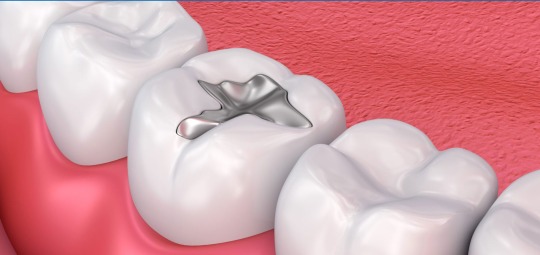

1 note
·
View note
Video
Contact
Address: 5221 Church Ave, Brooklyn NY ,11203
Phone: (347) 761-3871
Website:
http://www.dentalofficebrooklyn.com/service/dental-crowns/
About US
If you recently had a root canal treatment, you may be searching for a dentist who offers dental crowns in Brooklyn. If teeth are misaligned or stained you might also be interested in covering them up with crowns. Here at AFAM Dental, Brooklyn, we offer affordable options for everyone’s individual needs and budgets.
There are many benefits of dental crowns. They offer great protection for damaged, crooked or discolored teeth. Dentist may also suggest you to have crowns installed if teeth are severely decayed or chipped. This is often what dentists recommend after patients have root canals treatments completed or to support bridges and cover implants.
Dental crowns is a great choice for people with damaged teeth, as they help to improve biting and chewing functions, restore an ability to speak without slurring. If you are eager to get a healthy, attractive smile, installing crowns is a great, affordable option to consider.
If you decide to get crowns installed at AFAM Dental, our professionals will use the technique to place an implant directly onto your natural tooth below your gum line. There is no need to have a tooth extraction completed to get a nice smile. The dental crown helps to protect the teeth from harmful bacteria and give the appearance of a tooth that is normal size, shape and color.
Category:
Dentist, Cosmetic Dentist, Dental Implants Periodontist
Related Searches:
Dental Implants East Flatbush | Cosmetic Dentist of East Flatbush | dentist East Flatbush | East Flatbush | emergency dentist | root canal | Affordable dentures | dental bridge | dental crowns | Dental Fillings | Dental Veneers | tooth extraction | Flatbush | Brooklyn | NY
Additional Details:
Hours: Mon - Thur 12 pm - 6 pm Fri 12 pm - 4:30 pm
Payment Types: All cc, cash
Nearby Location:
New York| Jersey City| Queen| Manhattan| Yonkers
33014| 43215| 33142| 11211| 21224
Social Links:
https://twitter.com/Rdentistny
GMB Listing:
https://g.page/dental-crowns



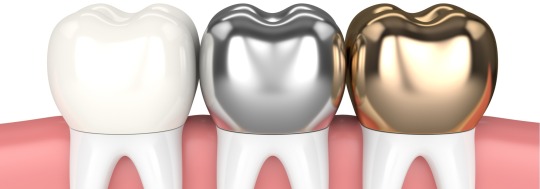
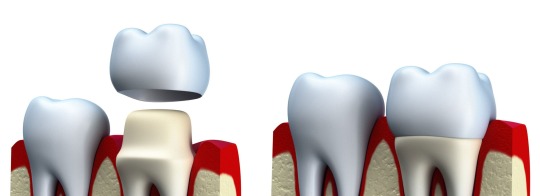
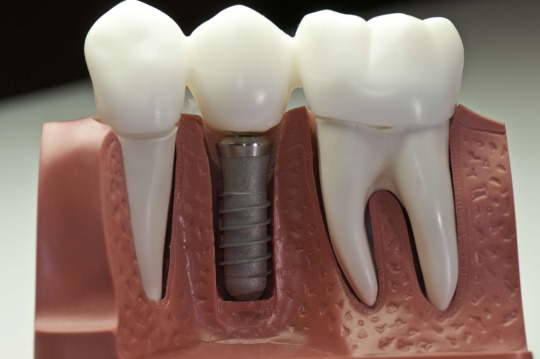
1 note
·
View note
Text
Oral Surgery in East York, ON
Unlock a brighter, healthier smile with precision Oral Surgery in East York, ON! Elevate your oral wellness - schedule your transformative consultation now!

#dentist in east york#east york dentist#dentistry in east york#east york dentistry#Oral Surgery#Oral Surgery in East York#East York Oral Surgery#Oral Surgeon#Oral Surgeon in East York#East York Oral Surgeon#Dental Surgery#Oral Surgery East York#Dental Implants East York#Wisdom Teeth Extraction East York#East York Dental Surgery#Emergency Oral Surgery East York
0 notes
Video
Contact
Address: 5221 Church Ave, Brooklyn, NY 11203
Phone: (347) 763-9868
Website:
http://www.dentalofficebrooklyn.com/service/dental-veneers/
About US
If you want a better smile, then dental veneers is one of the best possible options. Getting veneers might be pricey but benefits far outweigh the cost. there are numerous types of veneers, such as prepless veneers, press-on veneers, etc.
You can always get a consultation at our East Flatbush dental clinic to see what type of veneers would be right just for you. AFAM Dental proudly serves Customers with different backgrounds, even some celebrities, and public figures.
The way our teeth look and feel plays an important part in our lives. Unfortunately, most of us don’t visit dental specialist until we start feeling that something is wrong. If you’re at that point, schedule a dental appointment with our veneers specialist today. We offer same-day appointments, you can get your teeth treated as soon as possible.
Our dental professionals have a great knowledge of how to keep your mouth in perfect health and experience to give a proper treatment to the most difficult problems Whether you need a simple cleaning or complicated surgery, we’ve got you covered. If you decide to come to us for veneers installation, you will not be disappointed.
Veneers is pretty simple cosmetic procedure when porcelain is bonded to the teeth in order to protect them and improve the appearance. There are some alternatives, but veneers is the most popular option due to their efficiency and durability.
Related Searches
Dental Implants East Flatbush | Cosmetic Dentist of East Flatbush | dentist East Flatbush | East Flatbush | emergency dentist | root canal | Affordable dentures | dental bridge | dental crowns | Dental Fillings | Dental Veneers | tooth extraction | Flatbush | Brooklyn | NY
Additional Details
Hours:
Mon - Thur 12 pm - 6 pm Fri 12 pm - 4:30 pm
Payments Types:
All cc, cash
Nearby Location
Jersey City| New York| Newark| Yonkers| Philadelphia
07305| 07305| 07199| 10701| 19134
GMB Listings:
https://g.page/dental-veneers-brooklyn?share





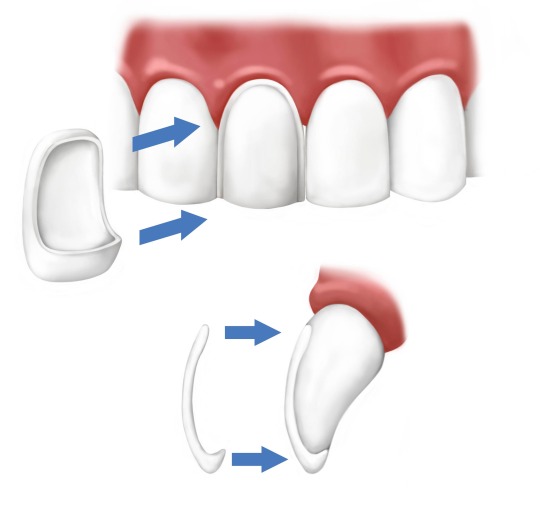

1 note
·
View note
Video
Contact:
Address: 5221 Church Ave, Brooklyn NY,11203
Phone: (347) 644-2605
Website:
http://www.dentalofficebrooklyn.com/service/cosmetic-dentist/
Category:
Dentist, Cosmetic Dentist, Dental Implants Periodontist .
About US:
AFAM Dental is a highly sought-after cosmetic dentist of East Flatbush. Touted as one of the best cosmetic dentists in New York, we’re held in high regard by our valued patients. Our expertise is extensive, making us qualified to oversee everything from general dentistry to cosmetic dental surgery. Best of all, we offer same-day appointments. Our customers find great comfort in knowing that we provide prompt solutions to dental complications.
In addition to our reliable services, we also promise top-notch customer care. At AFAM Dental, the patient always comes first. With that said, we see to your wants and needs and go the extra mile to exceed expectations. In short, when you make AFAM Dental your go-to cosmetic dentist of East Flatbush, you gain access to professional industry experts, the most advanced technology, and our tried-and-true methods.
As a seasoned dental practice, we understand the importance of priming teeth for oral procedures. Whether you’re employing our dental implants East Flatbush services or are looking into a cosmetic procedure, we know how to achieve flawless results.
At AFAM Dental, we’re proud to offer a wide variety of services. As a full-service dentist, our specialties are ever-expanding. Currently, these are our dental solutions that we offer to adults and teens alike.
Related Searches:
Dental Implants East Flatbush,Cosmetic Dentist of East Flatbush, dentist East Flatbush, East Flatbush, emergency dentist, root canal, Affordable dentures, dental bridge, dental crowns, Dental Fillings, Dental Veneers, tooth extraction, Flatbush, Brooklyn, NY.
Additional Details:
Hours:
Mon - Thur 12 pm - 6 pm Fri 12 pm - 4:30 pm .
Payment Types:
All cc , cash .
GMB Listings:
https://g.page/cosmetic-dentist-east-flatbush





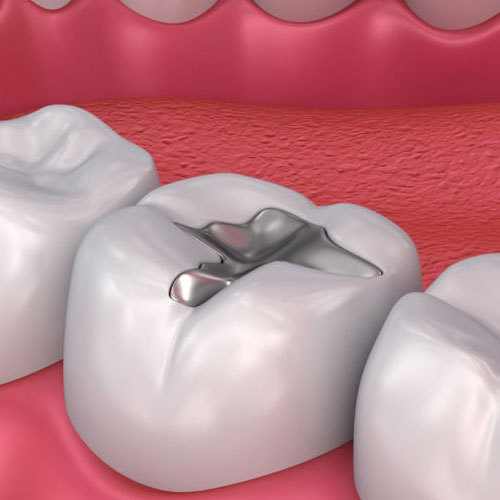
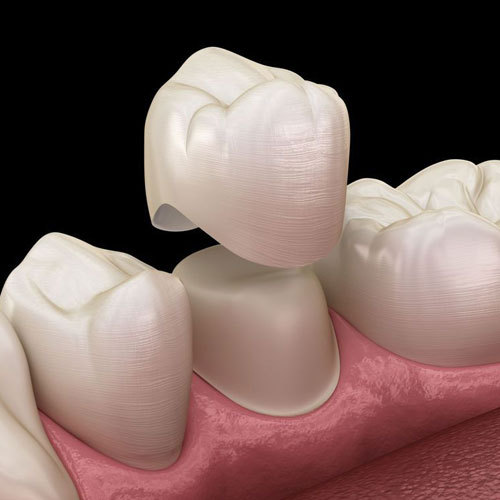




1 note
·
View note
Video
Contact
Address: 5221 Church Ave, Brooklyn , NY 11203
Phone: (347) 644-2539
Website:
http://www.dentalofficebrooklyn.com/service/dental-implants
About US
Touted as a leading dental implant specialist, AFAM Dental is a Brooklyn , NY-based dentist offering cutting-edge dental implant services. In the hopes of providing our clients with advanced solutions, we use the latest technology and techniques to deliver quality results. We outsource our dental implants from Switzerland, and the company we partner with is regarded as the best dental implant resource in the world.
The majority of our dental implants are preloaded, allowing our clients to reap the benefits of an expedited process. With our care and maintenance procedures, you’re promised long-lasting dental implants. If top-notch dental implant services are what you desire, give us a call for your free consultation.
Dental problems can wreak havoc on your self-confidence. With our assistance, we can restore your smile and, in turn, rid you of any self-conscious feelings. With our proven, trusted, and modern methods, you’re promised excellent and prompt results.
To ensure that we get the job done right, we employ microscope technology. Whether you need a single tooth implant or full mouth reconstruction, we’re qualified to help.
Related Searches
Dental Implants East Flatbush | Cosmetic Dentist of East Flatbush | dentist East Flatbush | East Flatbush | emergency dentist | root canal | Affordable dentures | dental bridge | dental crowns | Dental Fillings | Dental Veneers | tooth extraction | Flatbush | Brooklyn | NY
Additional Details
Hours:
Mon - Thur 12 pm - 6 pm Fri 12 pm - 4:30 pm
Payments Types:
All cc, cash
Nearby Location
New York| Jersey City| Queen| Manhattan| Yonkers
33014| 43215| 33142| 11211| 21224
GMB Listings:
https://g.page/dental-implants-east-flatbush
1 note
·
View note
Text
The Demarcation Line: Before and After Bitches Brew

On August 19th, 1969, the day after Jimi Hendrix’s legendary performance at Woodstock, Miles Davis entered Columbia Records Studio B and over 3 days recorded what would be named Bitches Brew. These sessions were mostly experimental—merely governed by occasional audio gestures, finger snaps, and a few rehearsed musical signals. The bulk of the music representing the project was spontaneously invented by carefully chosen musicians who were afforded complete liberty to react in the moment. Some participants now admit that there were moments that they were unaware they were even being recorded.

After these three days had ended and the musicians exited the studio, producer Teo Macero waded through all of the amorphous material and demonstrated his own creative virtuosity with a pioneering use of the studio effects and editing techniques by assembling it into the final product. Once released on March 30th, 1970, it spread like wildfire becoming Davis’s first gold record, selling more than half a million copies.
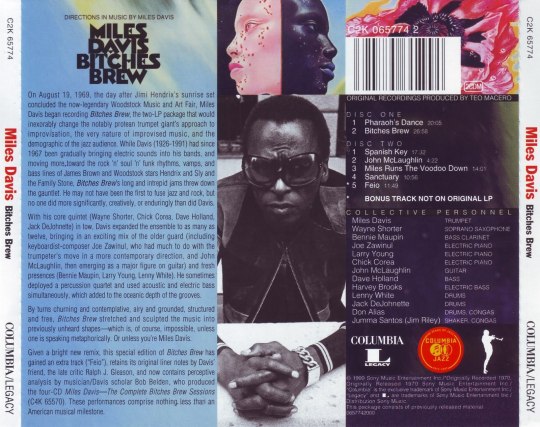
But this financial success often is used to upstage the Pandora’s Box that it opened. From the vantage point of fifty years later, we can plainly see the demarcation line that is represented by this bold project. On one side are those who contend that progress must be embraced—technological advances allow vocabulary to expand, but at what cost? Does progress also mean that perhaps that which is then rendered obsolete ought to be discarded from conversation altogether? What of those who prefer to strive for preservation and precise, authentic emulation of past masters, do they deserve scorn for defending what may be outside of conventional definitions of their craft?
undefined
youtube
This is the vigorous debate that continues to take place evidenced by the spirited conversation in 2009 by Davis sideman James Mtume and critic Stanley Crouch in a criticism of Ken Burns’s 2000 documentary series, Jazz (accused of giving post-1959 developments short shrift in favor of detailing the end of Louis Armstrong’s and Duke Ellington’s lives), and even the separation of the music into two separate channels on satellite radio: Real Jazz (and doesn’t that moniker clearly expose the controversy?) vs. Watercolors (a channel featuring music given the pejorative label, Smooth Jazz).

Fortunately for Miles, unlike his fallen peers, he lived long beyond 1970 and provided his own commentary on the events of this revolutionary time in cultural history. Embellished with a tone of narcissistic self-importance, Davis, in his 1990 autobiography appropriately titled Miles, The Autobiography, is not shy about details of his life, both laudable and reprehensible.

He adamantly defends his race and his freedom at any cost, and enthusiastically acknowledges those figures enduring similar struggle without compromise of their integrity. He was born in 1924 and raised in East St. Louis as Miles Dewey Davis III, son of Miles Dewey Davis, Jr., a respected dentist who raised his son to view the world with Marcus Garvey–like suspicion.

Dr. Davis would forever support his second of three children as his son ventured to New York to enroll then quit Juilliard School of Music to pursue an insecure gigging career with Bebop groups, acquire a debilitating heroin habit, and even endure the misadventures with women—Davis (the son) was already responsible for two children who, unlike their father, were never financially supported even after his successful life ended in 1991.

Miles describes the dynamic of the mid-1950s Civil Rights Era as a time that he also was finding his stride and becoming recognized along with others in his generation:
“When this group was getting all this critical acclaim, it seemed that there was a new mood coming into the country; a new feeling was growing among people, black and white. Martin Luther King was leading that bus boycott down in Montgomery, Alabama, and all the black people were supporting him. Marian Anderson became the first black person to sing at the Metropolitan Opera. Arthur Mitchell became the first black to dance with a major white dance company, the New York City Ballet. Marlon Brando and James Dean were the new movie stars and they had this rebellious young image of the “angry young man” going for them. Rebel Without a Cause was a big movie then. Black and white people were starting to get together and in the music world Uncle Tom images were on their way out. All of a sudden, everybody seemed to want anger, coolness, hipness, and real clean, mean sophistication. Now the “rebel” was in and with me being one at that time, I guess that helped make me a media star. Not to mention that I was young and good looking and dressed well too.” (Davis, 197-198)
undefined
youtube
The group that was drawing celebrities such as Frank Sinatra, Tony Bennett, Dorothy Dandridge, Lena Horne, Sugar Ray Robinson, and Marlon Brando was his first remarkable Quintet featuring the tenor saxophonist John Coltrane. This group, just three years following King’s Montgomery Bus Boycott, recorded the album Kind of Blue, a masterpiece remaining the most important Jazz recording in history. This project was among the first to explore Modal composition: the idea of improvising melody above an accompaniment of a static harmonic foundation. The compositional approach was introduced to Davis and codified by theoretician George Russell in his Lydian Chromatic Concept of Tonal Organization in 1953. When turntablism emerged in the 1970s as a means of maintaining a static accompaniment to support the emcees and breakdancing, it was merely updating the textures created by Miles Davis and his contemporaries in 1959 whose experiments began paving the way for Hip-Hop.
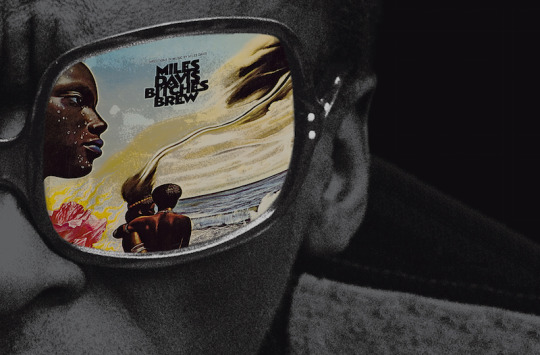
#miles davis#bitches brew#Teo Macero#jazz history#Hip Hop#Kind of Blue#modal jazz#James Mtume#Stanley Crouch
17 notes
·
View notes